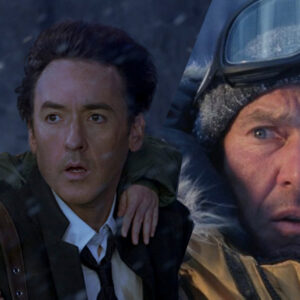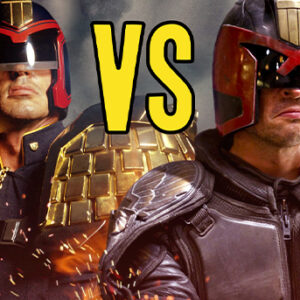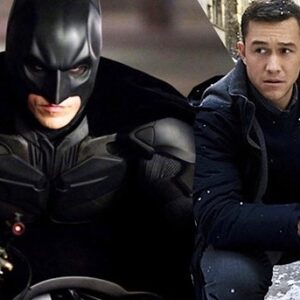Last Updated on August 5, 2021
Ink & Pixel is a source of pride and joy for me as a writer and as such, I’m always striving to take this column further for those who read and enjoy it. In an effort to widen the reach of our continuously growing fanbase, Ink & Pixel has been granted permission to broaden its horizons with the inclusion of films from the Horror, Sci-Fi, and Fantasy genres. I hope that you enjoy this bold new direction for the column. Additionally, if you yourself, or anyone you know, helped to make any of the amazing feature films found within this column, I would love to talk to you to further my knowledge. Please contact me at [email protected] so we can discuss it further.

As a big fan of animation I make it a point to see as many animated films as possible. If you’re ever with me in a department store, and I suddenly disappear, you can most likely find me wandering the Media department, pacing back and forth in the Family section. Yesterday, I was in my local Target, when I found the film ERNEST & CELESTINE. Knowing absolutely nothing about it, other than its nomination for Best Animated Feature at the 86th Academy Awards, I decided to “blind buy” the film and give it a watch. Now, before I go on and on about how much I adored it, let’s take some time to get acquainted with its origin and find out how a touching tale between a swindling bear and a kindhearted, mischievous mouse came to be.

Released in the year 2012 – making its first appearance at the 2012 Cannes Film Festival – ERNEST & CELESTINE is a French-Belgian animated comedy-drama written by Daniel Pennac and boasts a total of three directors including: Stéphane Aubier, Vincient Patar, and Benjamin Renner. Produced by Didier Brunner, Henri Magalon, and Vincient Tavier, ERNEST & CELESTINE was created under the talent-filled auspices of both Les Armateurs and La Parti Productions. The film is presented as a hand-drawn animated feature that is positively drenched in a beautiful, almost watercolor-like presentation; artistically speaking.

The story of Ernest (the original French-speaking role was portrayed by Lambert Wilson and the English version by Forest Whitaker) and Celestine (with the original French speaking role depicted by Pauline Brunner and the English by Mackenzine Foy) is a sweet one. With that said, there’s also a distinct level of social commentary woven into the film that manages to create a series of deep, important, and powerful messages for its audience. Celestine is a young mouse who lives in an underground rodent society, where – for one reason or another – the most honored occupation is dentistry. At night, in the orphanage where Celestine lives, a craggy caretaker by the name of the Gray One spins exaggerated cautionary tales about a “big bad bear” who gobbles up little mice whole. Gruesome, no? Perhaps it’s just the Gray One’s way of warning the children to keep to the shadows when venturing above ground into razor-sharp gaping maw of danger that is the bear society.

Why would they go above ground if it isn’t safe, you ask? Well, part of the wee one’s societal responsibility is to sneak off and collect lost teeth from bear cubs for the purpose of keeping the rodent dentistry profession well stocked with replacement chompers for all those in need. It’s a dangerous job for certain, and it just so happens that one evening, Celestine finds herself in a spot of trouble because of it. You see, after being spotted by a family of bears, Celestine is forced to seek refuge in a stinky garbage can, away from the eyes of the fabled vicious bears who will assuredly do her harm. The following morning, a starving and destitute bear by the name of Ernest discovers Celestine, and attempts to make her his lunch. The young mouse, however, offers the hungry bear the location of an access point to a basement filled with sustenance and lives to see another day.

The morning after Ernest’s unlawful eating binge, he is discovered by the local fuzz and arrested for burglary. While he is being hauled off to jail, Celestine appears and offers to free Ernest from his shackles, but only if he’ll help her steal a sizable number of teeth from a bear society shop. Ernest agrees, and all might have gone according to plan if, post heist, Celestine had not hidden her new friend in the worst place imaginable – a room inside the orphanage where many of her brothers and sisters were just waking up inside of their beds. Shortly thereafter, the unlikely pair are discovered, and together they make haste for Ernest’s house, buried deep within the woods. It’s inside that house, while seeking asylum from the law, that Ernest and Celestine form an unprecedented and unbreakable bond, one that will turn even the blackest of hearts into gold.

Phew! Okay, that was a bit long yeah? Well, it does take time to explain the whole rodent/bear dentistry dynamic. Moving on! First and foremost, ERNEST & CELESTINE is based on the children’s book series of the same name. Published, written, and illustrated by Belgian author Monique Martin (under the pen name Gabrielle Vincent), the bear and mouse duo have shared several adventures together since 1981. In the books, the pair take trips to museums and circuses, throw parties, and even share in a picnic or two depending on the weather. Obviously the film version of ERNEST & CELESTINE takes on a much more action-adventure vibe, and has allowed the writers to delve deeper into the social commentary of both the above and below ground segregation between the bear and mouse societies. It’s all very seamless in its delivery and is, without question, one of the most notable additions offered by Vincent to the literary world.

Producer Didier Brunner, in an interview shown at the start of the behind-the-scenes footage contained on the DVD, shared the concept that ERNEST & CELESTINE was a film project very close to his heart. This attachment was, in no small measure, due to the fact that he would read the stories written by Gabrielle Vincent to his daughter every night before bedtime. “She’d almost have a crying fit if we forgot to read her an episode”, said Brunner with a wistful expression on his face. I personally think it’s really cool when the filmmakers have a built-in emotional attachment to the material. I feel like that preexisting appreciation inspires them to work that much harder to create something worth seeing.

In an interview presented by Studio Canal and Emilie Martel, director Benjamin Renner spoke on the process of adapting Vincient’s unique minimal line and watercolor art style; saying that, “I had already made up my mind to draw very few details and go straight to the essence, with the idea of “animated sketches” in mind that would allow us to focus on the pleasure of drawing without going back over it lots of times.” As it so happens, this was the precise look that Les Amateurs were hoping for when creating the look of ERNEST & CELESTINE. With regard to the re-creation of the characters’ designs and making the leap from the storybook page to the silver screen, Renner had this to say, “For the pilot, we scrupulously respected the original design of Celestine because that was our aim. Later on, when we drew the storyboard for the film, my team pointed out that I’d gradually changed Celestine’s profile. Her muzzle has gradually shrunk, without me realizing it. I had appropriated the character with meaning to.”

Throughout the process, Brenner and his team realized that it was essential to change the art style and presentation of the characters if they were to make the film their own. Steps were taken to preserve the spirit and atmosphere of the world found in the various novels, but at the same time, enough was done to ensure that the film would stand apart from its source material. That being said, there were aspects of the art that were directly lifted from the books, such as the posing and gesturing of the characters. When asked about that, Brenner had this to say, “Many poses were directly inspired by those in the books. We also respected the very theatrical illustrative style of the books. There are never any high shots or low-angle shots, no close-ups or dramatic effects. The dynamism of the mise-en-scène (a French term that means “placing on stage”) comes from the character’s actions, their animation, and through the set design. Many of the scenes pay homage to the books.”

After personally studying the art found in the novels, as well as seeing the film in action, I would have no problem in saying that the style seen in the film compliments the original look incredibly well. When you see it, because you really should, take note of the way the characters move and how the overall presentation of the story feels as if someone is just off-camera, turning the pages to a storybook rich with color, emotions, and a thirst for life.

At the close of its theatrical run, ERNEST & CELESTINE brought home a worldwide total of $5,075,362 (according to BoxOfficeMojo.com). The film barely registered with domestic audiences, making up only an estimated 5.2% of the film’s total gross, but that’s their loss. Upon watching the film, I found its characters to be incredibly well crafted, their world fully realized, and the art of the film to be quite mesmerizing in every way. Truth be told, I initially dismissed this movie because of its (again, in my own opinion) lackluster title, but boy was I completely wrong. This film is proof positive that you can never judge a book by its cover, especially when it comes to animation. I strongly recommend this film to you and your family. Till next time, folks!




















Follow the JOBLO MOVIE NETWORK
Follow us on YOUTUBE
Follow ARROW IN THE HEAD
Follow AITH on YOUTUBE